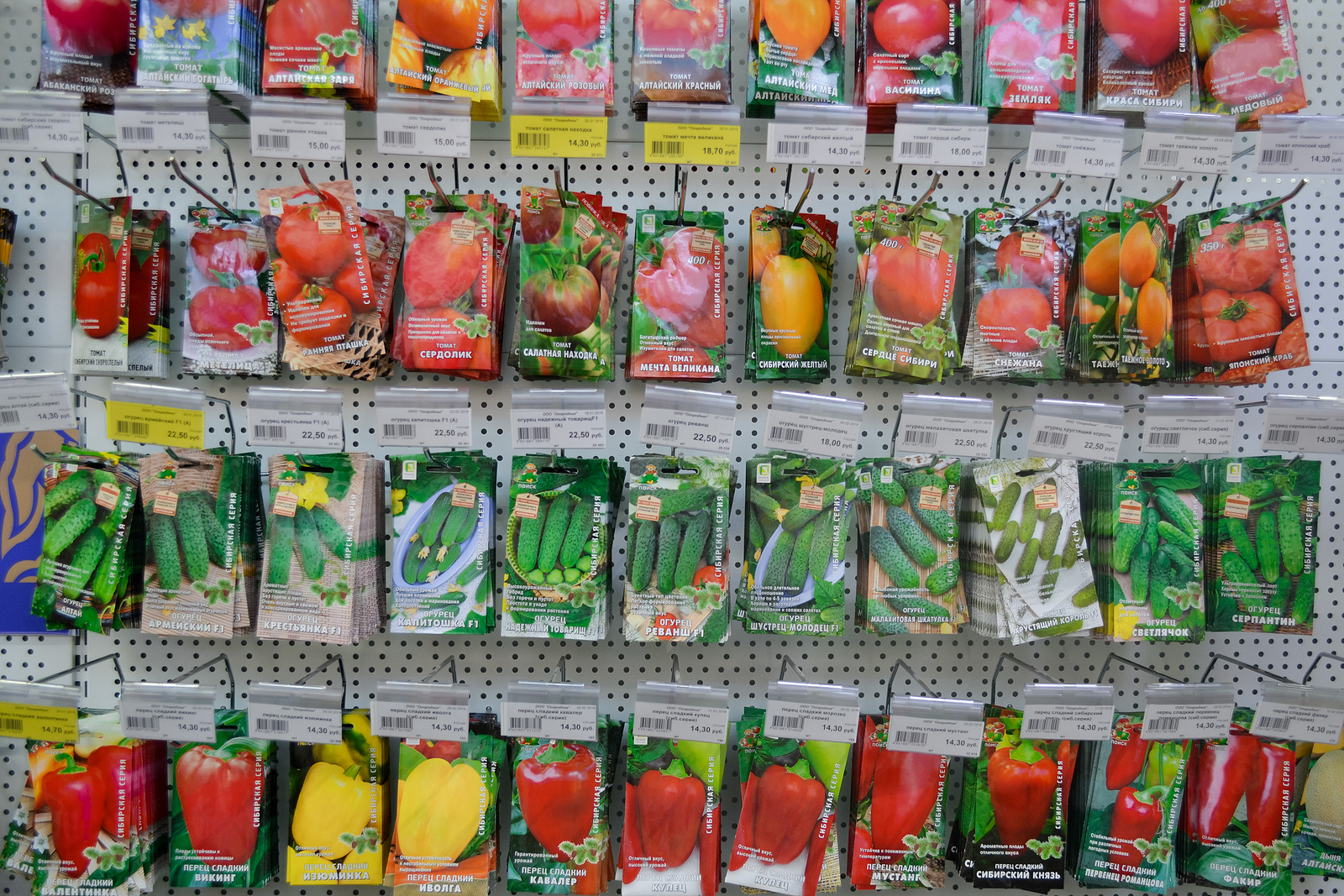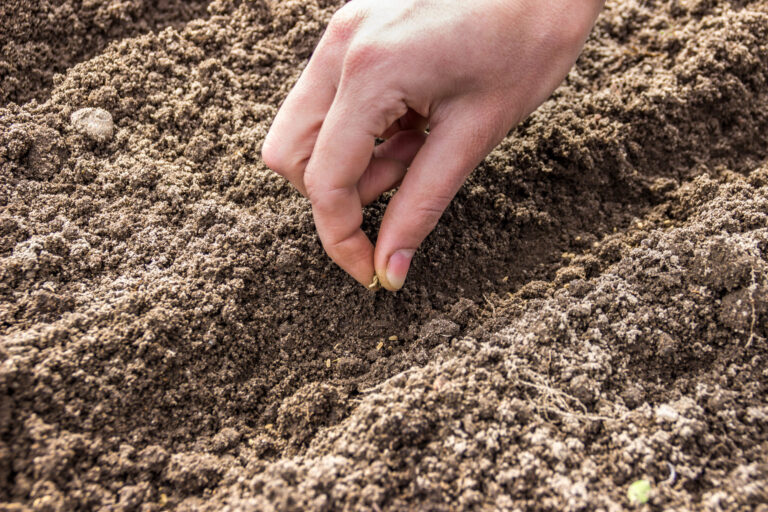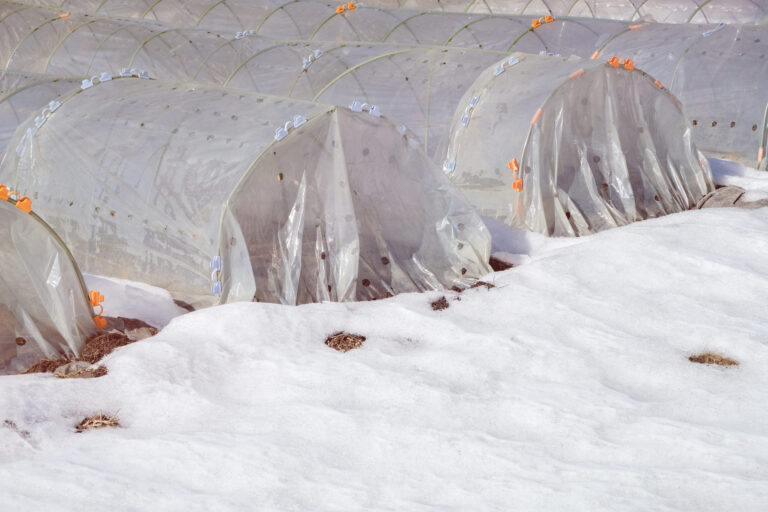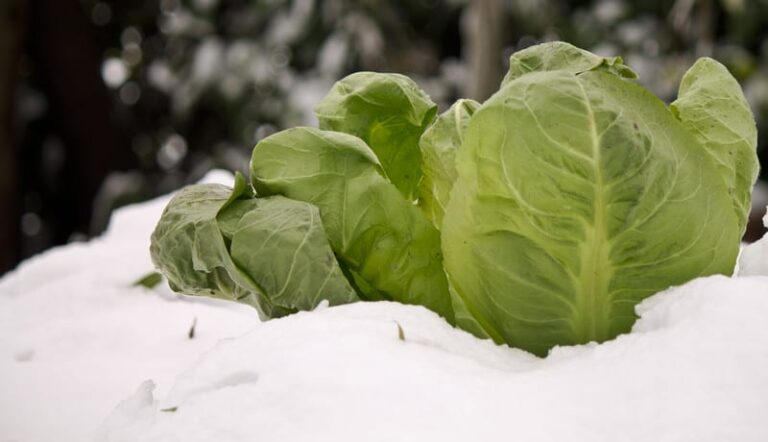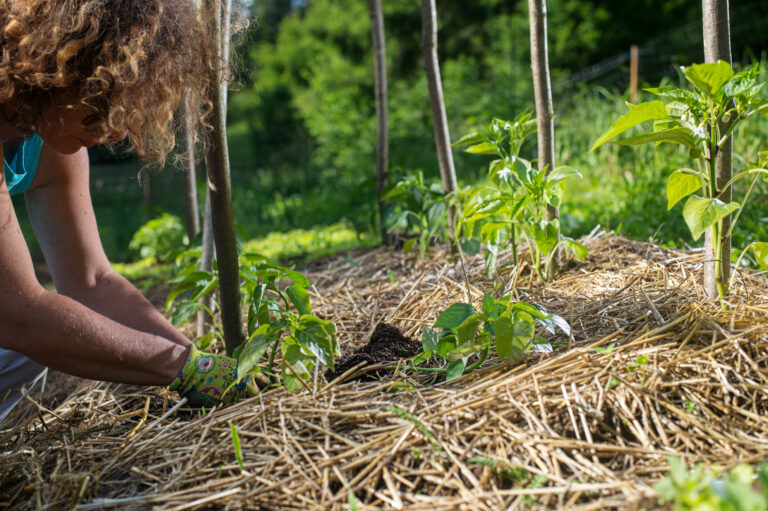February Vegetable Garden Zone-by-Zone
There is no better way to start the vegetable garden season than with a list of the crops you want to grow this year.
To make your list, answer these simple questions:
- Which vegetable do we want for fresh eating?
- Which do we want for freezing and storing as well?
- How many mouths are we feeding?
- Did we grow enough last year?
- Which do my family and friends never get enough of?
With your list in hand get to the garden center and purchase your seeds and other supplies before the spring rush.
In garden Zones 7 to 11, you can plant in the garden this month. In Zones 10 and 11, warm-season crops can go in the garden. In Zones 7 to 9, cool-season crops can go in the garden. Warm-weather crops can be started indoors or in a cold frame or plastic tunnel. In Zones 3 to 6, get crops started indoors under lights for transplanting out next month.
Here follows a roundup of vegetable garden opportunities and tasks for the month of February. Use the map to determine in which USDA zone you are located.
Zone 10-11: Plant seeds of corn and cucumbers in the garden. Set out transplants of tomatoes, peppers, and eggplants. Start okra, southern peas, and sweet potatoes in the garden. Be prepared to protect crops from chilly nights and unexpected frost with row covers. Direct sow and set out transplants fast-growing varieties of cool-weather crops such as beets, carrots, and radishes; quick-growing varieties should mature before warm and hot days arrive. Fertilize vegetable seedlings with mild liquid fertilizer. Sow annual herbs such as dill, fennel, and basil. Plant muscadine grapes and figs; mulch them to keep roots evenly moist. Plant strawberries and bare-root nursery stock. Finish pruning while plants are still dormant. Fertilize established berries and fruit trees if not done last month. Fertilize established citrus and tropical plants. Control pest caterpillars on vegetables with Bacillus thuringiensis (BT).
Zone 9: Harvest asparagus spears this month. Prepare soil for planting crops. Turn under cover crops, such as annual rye, vetch, and clover. When the soil is dry, turn composted manure and aged compost into planting beds. Start seeds of tomatoes, peppers, and eggplants indoors beneath a bright light. Direct sow early this month beets, broccoli, cabbage, carrots, celery, collards, kale, leaf lettuce peas, onions, radishes, and spinach. Mulch potato plants. Thin leafy greens and water them regularly. Late this month, begin planting beans, cucumbers, and early sweet corn outdoors under the protection of a plastic tunnel. Fertilize vegetable seedlings with mild liquid fertilizer. Sow annual herbs such as dill, fennel, and basil. Plant strawberries and bare-root nursery stock. Finish pruning while plants are still dormant. Fertilize established berries and fruit trees if not done last month.
Zone 8: Harvest asparagus spears this month. Prepare your planting beds early in the month by adding aged compost and manure. Plant onion sets or plants in well-drained beds. By the third week of the month, plant potatoes 4 inches (10cm) deep in warm soil and mulch them. Prepare beds for sowing carrot seeds. Also begin sowing seeds of lettuce, endive, collards, and other leafy greens outdoors; for a continuous harvest, repeat sowings every 2 weeks. Start tomatoes and peppers indoors; as soon as the seeds sprout, move the flats or pots beneath bright lights. Plant strawberries and bare-root nursery stock. Prune fruit trees while they are still dormant, then spray them at their “pink bud” stage with either a copper or lime-sulfur solution to ward off foliar and fruit diseases. Fertilize established berries and fruit trees if not done last month.
Zone 7: Mow winter cover crops and turn them under if the soil is dry enough to cultivate. Spread compost over beds that you will plant soon. When the first crocus opens, harden off transplants of lettuce, cabbages, and onions then set them in the garden; protect them with cloches or row covers on cold nights. Direct sow seeds of radishes and cold-hardy lettuces. When daffodils begin to open, plant seeds of spinach, turnips, and peas. Cover the pea bed with clear plastic until sprouts begin to emerge; then immediately switch to floating row cover to protect seedlings from weather and birds. Start slow-growing lettuce and early tomatoes indoors under lights. Start herbs indoors under lights. Set seed potatoes in a warm place to encourage sprouting. Weed strawberries and blanket them with a row cover to encourage early blooms. Prune fruit trees, berries, brambles, and grapes on mild days.
Zone 6: Under fluorescent lights, start seeds of onions and leeks at the beginning of the month. Near the end of the month, start seeds of broccoli, cabbage, cauliflower, celery, and brussels sprouts indoors and under lights. For the earliest tomatoes, start seeds of ‘Early Girl’ under lights now. (In April set out tomato transplants protected by Wallo’Waters.) Outdoors, work the soil as soon as it has dried, preparing beds for peas, potatoes, and other early crops. Sharpen pruning shears and use them to prune apple and other fruit trees, brambles, and grapevines. Rake the orchard floor to interrupt the life cycles of insect pests.
Zone 5: Start seeds of lettuce, celery, onions, leeks, and early tomatoes indoors under lights. If the ground is not frozen, sow spinach and radishes outdoor under the cover of a plastic tunnel. Start hardy herbs indoors beneath lights. Toward month’s end start early cabbage. Outdoors, cover the compost pile with black plastic to help it thaw. When weather permits, prune fruit trees, berries, brambles, and grapes. On mild days apply dormant oil sprays. Order strawberries, apples, and other fruit trees.
Zone 4: Try raising an indoor crop of leaf lettuce beneath fluorescent lights. Late in the month, start some seeds indoors of broccoli, early cabbage, cauliflower, celery, chives, leeks, and onions. Prepare the cold frame for use next month. If the snow is not deep, trim dead or damaged branches from mature fruit trees and brambles. On mild days check for overwintering pests and apply dormant oil sprays.
Zone 1-3: Replace fluorescent bulbs in grow lights that are more than 2 years old. Organize seed packets according to planting date. Grow leaf lettuce, chives, and cress beneath lights. Late in the month, sow onion and celery indoors. When weather permits, prune fruit trees, berries, brambles, and grapes. Apply dormant oil sprays on mild days.
Vegetables to Plant in USDA Zones 9 and 10 in February
- Zone 10: Plant in the garden cool- and warm-season vegetables and herbs. Plant asparagus, beets, beans, cabbage, carrots, casaba, corn, cucumbers, eggplant, kale, lettuce, melons, okra, onions, onion sets, parsley, parsnip, peas, potatoes, pumpkin, radishes, roselle, salsify, summer spinach, squash, tomatoes.
- Zone 9: Set out in the garden cool-season vegetables and herbs. Plant perennial vegetables such as globe artichokes, asparagus, horseradish, and rhubarb.
- Vegetables to plant as soon as the soil is dry enough to work: kale, peas, early potatoes, spinach, mustard, asparagus crowns, rhubarb roots, onions sets, radishes, lettuce.
- If you have limited time and space to devote to vegetables, choose six varieties that are rich in vitamins and minerals. Good choices include tomatoes, snap beans, beets, carrots, radishes, greens such as chard and lettuce, and New Zealand spinach.
- Prepare beds for spring planting if the ground is friable–meaning workable. Spade a rich compost into areas to be planted at least a week in advance of planting. For tomatoes, select a location where they have not been grown for a year or more.
- Plan and plant a succession of crops to provide fresh vegetables over a long period of time.
- Rhubarb roots should be planted now in fairly rich soil and spaced 3 feet (90 cm) apart. Choose an open, sunny location. Rhubarb likes plenty of water all through the growing season and is a heavy feeder.
- Continue to water regularly.
Mild regions Zones 8-9
Garden checklist of things to do during February in zones 8-9:
Plan and design. Before planting, sketch a base plan for your kitchen garden. Consider the location of the house, garage, shed, fences, walls, and large trees that will cast shadows across the garden. Vegetables require at least 6 hours of sun each day to thrive. Locate your garden near a water source if you live in a region with dry summers.
Seed orders. Order seeds and plants for spring planting now.
Soil preparation. Prepare garden beds as soon as the ground can be worked. Test your soil. Add lime if your soil is too acidic. Mow winter cover crops and turn them under if the soil is dry enough to cultivate. Spread compost over the beds that you will plant.
Check winter mulch around perennial vegetables, brambles, and fruit trees, and add more if needed. Press frost-heaved plants back into the soil.
Greenhouse in cold regions. Check seed packets to determine the number of days from sowing to germination. Sow hardy and half-hardy vegetable seeds about 6 to 8 weeks before seedlings can be hardened off in the cold frame or under cloches in the garden. Do not start seeds indoors too early.
The first seeds to be sown will be cool-weather spring crops such as salad greens and lettuce, beets, celeriac, bulb onions, parsley, radish, and members of the cabbage family. By the end of the month, sow the seeds of tender warm-weather summer-harvest vegetables such as tomatoes and peppers that require 12 weeks or more indoors. When the seeds sprout, place them beneath bright lights.
Water trays of seedlings with a copper-based fungicide to prevent damping off. Ventilate the greenhouse on warm days to prevent the buildup of diseases in the damp atmosphere.
Coldframe in mild-winter regions. Ventilate the cold frame when the outside temperature rises above 40ºF (4ºC). Close again before sundown. If the soil is dry in the cold frame 6 inches (15 cm) down, provide a slow, deep watering directly in the soil on a warm day. Avoid wetting plant leaves.
Sow cool-weather spring crops in the cold frame in milder regions: salad greens, beets, onions, parsley, cabbage family.
Plants that have been started in the greenhouse can be hardened off in the cold frame before being planted out in the garden.
Vegetables harvest. Continue to harvest winter cabbage, Brussels sprouts, leeks, parsnips, root crops, and sunchokes. Be sure to lift every piece of sunchoke tuber. Store tubers in a paper bag in a cool, well-ventilated shed or garage.
Harvest asparagus spears where they have emerged and become pencil thick.
Start forcing rhubarb by covering the crowns with a deep layer of leaves or leaf mold, and then cover with a pot.
Sow vegetables outdoors. At the beginning of the month, warm the soil in areas of the garden intended for early sowings by covering the soil with polyethylene. You can also warm up the soil with cloches, floating cloches, or horticultural fleece.
Start sowing vegetables without protection if you live in a mild area. Check seed packets to make sure the varieties you are planting are suitable for early sowing. Few seeds will germinate if the soil temperature is below 45ºF (7ºC), so use a soil thermometer to check before you sow. Delay planting until the end of the month in cold gardens.
Transplanting out. In warm gardens, set out quick-growing cabbage family transplants (cabbage, cauliflower, bok choy, kale). Sow broad beans and early peas. Plant early potatoes, onion sets, and shallots. Cover them during hard freezes.
Direct seed. Late this month, direct-seed lettuce, endive, and other leafy greens in the garden and prepare a bed for carrots. Make a second sowing of early peas. Protect early plants with cloches or hot caps. Plant new strawberries and protect them from frost if you plan an early crop. Divide established mint plants and replant the runners in rich soil.
In cool gardens, sow broad beans, beets, Brussels sprouts, carrots, cauliflower, onions, parsnips, radishes, and spinach, and cover with cloches.
Prepare growing beds. Prepare a bed for new asparagus plants. Turn under well-rotted manure and garden compost set out in autumn. Plant asparagus crowns.
Dig well-rotted manure into celery trenches. Prepare runner-bean trenches by digging in compost or well-rotted manure.
Fruit trees and vines. Prune fruit trees after each storm. Remove broken and damaged branches. When the weather permits, prune apples, pears, berries, brambles, and grapes. Complete pruning while the plants are still dormant.
Spray fruit trees for over-wintering pests with dormant oil spray when the temperature rises above 45ºF (7ºC)—but while plants are still dormant. Spray peaches, nectarines, and almonds with a copper-based fungicide to prevent attack of peach–leaf curl. Spray apples and pears prone to scab infection. Spray trees when buds begin to swell. Apply a second spray to trees susceptible to peach-leaf curl about 14 days after the first application.
Fertilize established berries and fruit trees if not done last month. Sprinkle sulfate of potash around the root-feeding area of apples, pears, and plums to encourage good fruiting later in the year.
Prune autumn-fruiting raspberries. Cut back to ground level the canes that fruited last autumn. Prune back the canes of raspberries planted last year to about 12 inches (30 cm) above ground level. Tip back summer-fruiting raspberries to just above the top wire and cut down newly planted canes to about 9 inches (23 cm).
Prune back the stems of newly planted and two-year-old gooseberries by about one-half. Spray gooseberries and black currants for gooseberry mildew.
Plant figs, blackberries, blueberries, and strawberries. Plant currant bushes and raspberry canes, and water thoroughly.
Check mouse guards and tree wraps.
Mulch all newly planted trees, bush, and cane fruits with well-rotted compost.
Cool-region Zone 7
Here are garden tasks and vegetable and fruit growing suggestions for USDA Zone 7 for February.
Snow is possible in Zone . Frost and freezing temperatures may threaten at any time during this month.
Zone 8 in the United States includes the Mid-South and Pacific Northwest states.
Garden Tasks in USDA Zone 7 in February
- Prepare soil for planting by plowing or spading when the ground is not wet. Order the seeds and supplies for the spring garden.
- Make a plan of the garden on paper showing the vegetables to be grown for the spring and summer plantings and their location.
- Prepare vegetable garden beds.
- Insect and plant diseases can infect garden debris, damaged vegetables, and weeds. Clean the garden of debris and spent plants.
- Irrigate the garden if the weather is dry.
Cold regions
Preliminary preparation for the spring kitchen garden can begin this month in cold-winter regions. Snow and freezing weather is likely to persist in these areas for another month or two. But begin thinking about spring now and when the weather turns your garden will be ready. In the northern hemisphere, cold-winter regions include zones 3-6.
Vegetable and fruit garden checklist of things to do during February in zones 3-6:
Plan and design. Map where snow melts first in the garden and mark these spots for planting early crops.
Seed orders. Study online and mail-order catalogs and order seeds and plants for spring.
Outdoors. Check winter mulch around perennials, vines, and trees, and add more if needed. Press frost-heaved plants back into the soil.
Soil preparation. Prepare garden beds as soon as the ground can be worked. Test your soil. Add lime if your soil needs it.
Greenhouse and cold frame. Check seed packets to determine the number of days from sowing to germination. Sow about six weeks before seedlings can be hardened off in a cold frame, but do not start seeds indoors too early. The first seeds to be sown will be salad greens, beets, onions, parsley, radish, and members of the cabbage family. Also start seed potatoes indoors to insure an early crop, and sow tender vegetable seeds that require 12 weeks or more indoors.
Ventilate the greenhouse and cold frame when the temperature rises above 40 degrees. Close again before sundown. If the soil is dry in the cold frame 6 inches (15 cm) down, provide a slow, deep watering directly in the soil on a warm day, but avoid getting water on plant leaves.
Vegetables. Continue to harvest winter cabbage, Brussels, sprouts, parsnips, and leeks. Harvest sunchokes and make sure that you lift every piece of the tuber. Store tubers in a paper bag in a cool, well-ventilated shed or garage.
Start forcing rhubarb by covering the crowns with a deep layer of leaves or leaf mold, and then cover with a pot.
Fertilize or top-dress asparagus with compost if not done last fall.
Sow outdoors. Force rhubarb. Sow broad beans under cloches in mild areas.
Fruit trees and vines. Prune fruit trees after each storm. Remove broken and damaged branches. When weather permits, prune apples, pears, berries, brambles, and grapes.
Spray fruit trees for over-wintering pests with dormant oil spray when the temperature goes above 45 degrees—but while plants are still dormant. Spray peaches, nectarines, and almonds with a copper-based fungicide to prevent attack of peach–leaf curl.
Check mouse guards and tree wraps.
Mulch grapevines and gooseberries with well-rotted manure or compost.

